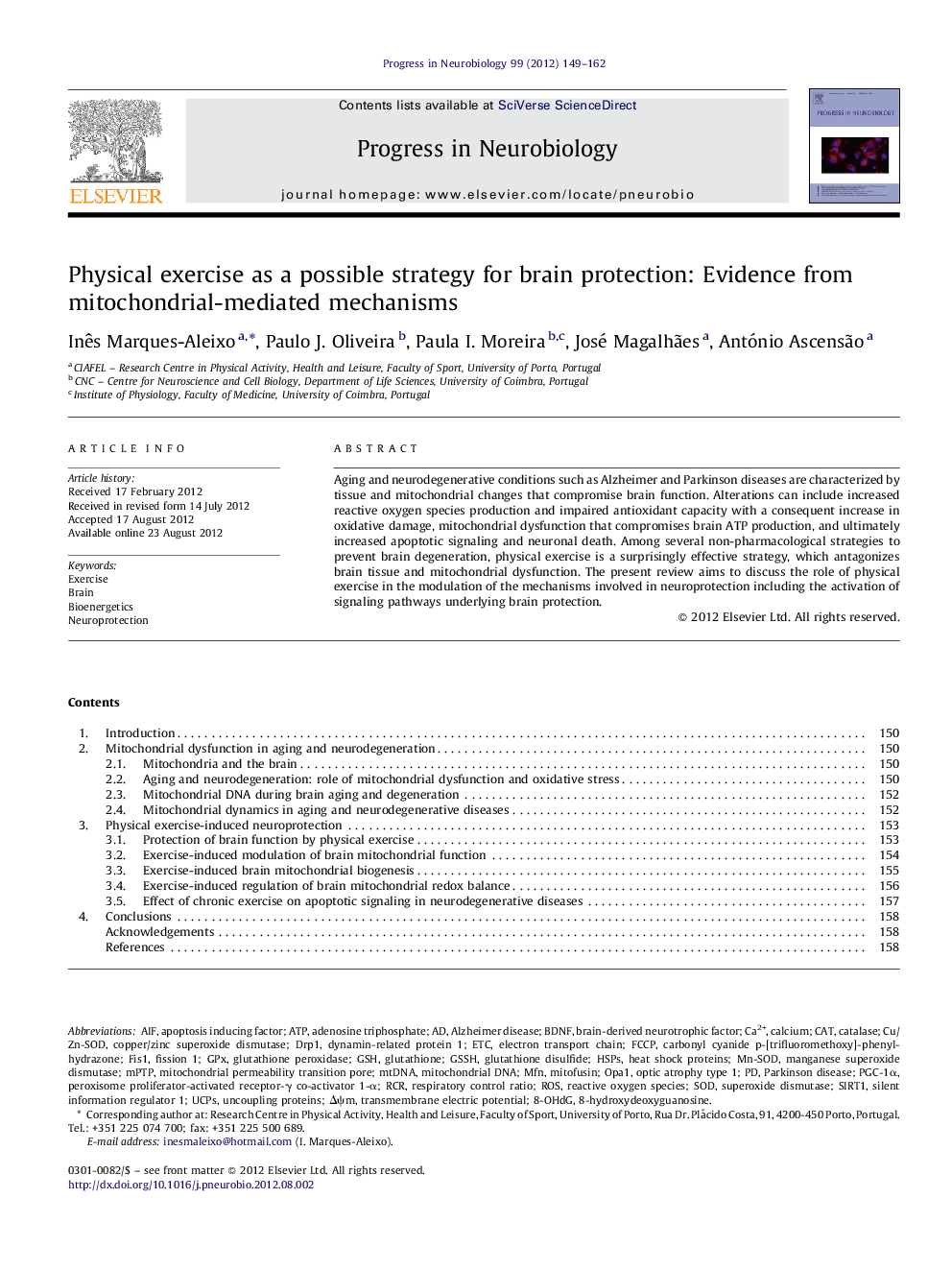| Article ID | Journal | Published Year | Pages | File Type |
|---|---|---|---|---|
| 4353422 | Progress in Neurobiology | 2012 | 14 Pages |
Aging and neurodegenerative conditions such as Alzheimer and Parkinson diseases are characterized by tissue and mitochondrial changes that compromise brain function. Alterations can include increased reactive oxygen species production and impaired antioxidant capacity with a consequent increase in oxidative damage, mitochondrial dysfunction that compromises brain ATP production, and ultimately increased apoptotic signaling and neuronal death. Among several non-pharmacological strategies to prevent brain degeneration, physical exercise is a surprisingly effective strategy, which antagonizes brain tissue and mitochondrial dysfunction. The present review aims to discuss the role of physical exercise in the modulation of the mechanisms involved in neuroprotection including the activation of signaling pathways underlying brain protection.
► Age-related neurodegenerative diseases are accompanied by mitochondrial dysfunction. ► Chronic exercise affords beneficial adaptations to brain mitochondrial network. ► Exercise influence redox and cellular death pathways and mitochondrial biogenesis. ► Exercise-induced benefits can counteract neurodegenerative conditions. ► Brain mitochondrial adaptations to chronic exercise.
